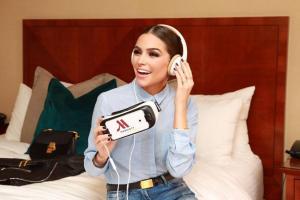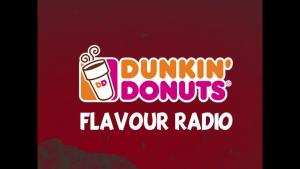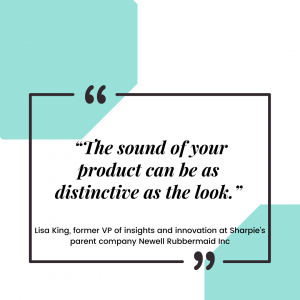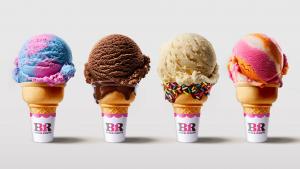
What is the first thing that comes to your mind when you hear the word marketing? Ads? Visual content? Social media posts? In short, whenever you hear marketing, your mind thinks of visual content – what we can see. Well, brands are certainly not this restrictive in their imaginations. They are targeting you through whatever means they have got. They want you to see, smell, taste, hear, and feel their products. This is called sensory marketing.
Are you puzzled? Don’t be – let’s start with an example. Imagine a Coca-Cola commercial. What is the first thing that comes to your mind? The sight of black soda pouring into the glass? No. The red and white logo? Maybe. One thing that must have struck a chord in your mind is the sound of Ahhh after at the end of the commercial or the slight rattling of ice cubes as the soda is poured into a glass, or the fizzling sound as the bottle opens. You remember sound cues more than the sight ones. This is what sensory marketing is all about. Now let’s delve deeper to know more about it.
What is sensory marketing – Exploring more details
Sensory marketing is about making a brand perception in customers’ minds by appealing to their senses. We cherish beautiful sights, enjoy hearing melodies, delight in anything tasty, feel good by touching something soft, and love a good smell.
Dr. Aradhna Krishna, a behavioral scientist, described sensory marketing definition as: “marketing that engages the consumers’ senses and affects their perception, judgment, and behavior.”
This type of marketing is effective because it subconsciously promotes a product in the consumer’s mind. They think about the product while not actively thinking about it.
This subconscious thinking converts a person from a passive visitor to a customer. The word “subconscious” here is important. Why? Because today, we are surrounded by ads. We don’t see anything or hear anything that doesn’t have ads. And people are fed up with this. Nearly 3 out of every 4 users (74%) think there are too many ads. High five, isn’t that the truth?
Our social media feeds are less about our friends and family and more of a PPC marketing page. What this constant bombardment of ads does is creates a revulsion among potential buyers. Now if I even had to buy a product, I wouldn’t because it is just everywhere, and I am kind of done with it. So traditional marketing is at a loss here. Enters sensory marketing where users are completely unaware that they are in awe of your products.
Nailing your sensory marketing strategy
Sensory marketing is not mindlessly using all five senses to evoke your brand’s familiarity in customers’ minds. Even if some, or even one sense, is stimulated, the marketing will be equally effective as research found that one sense triggers the other.
Here is how you could use sensory marketing to your advantage.
In-store experience: There is no better chance to convince a customer than when they are standing in front of you. A good in-store experience goes a long way toward long-term loyalty and brand recognition. Research shows 90% of shoppers are likely to return to your store if their in-store experience is positive. A customer inside a store has come along with all five senses. Give them a pleasing display, a soothing sound, a nice smell, some sweet goodies, and comforting feels, and there is no chance they would be able to resist the temptation of running back to your store.
Personalized campaigns: Now, with more online stores dominating the shopping arena, sensory campaigns have become more personalized. It is primarily based on neuromarketing. Advertisers classify customers based on their preferences and then create personal sensory marketing campaigns aimed at specific groups of customers.
Tracking KPIs: Like traditional marketing, sensory marketing is also useless if you are not tracking what is working and what is not working. Tracking the key performance indicators gives you an idea if your current strategy is working or if you need to stimulate a different sense of users.
Five ways of sensory marketing
Sight is the might
The biggest chunk of marketing is still based on what we see. Our eye is the most dominant of all senses. More than 80% of our shopping decisions are based on what we see. What we see influences our perception of that thing. That’s why the most vital marketing elements, ads, logos, billboards, and promotional videos, appeal to our eyes. Research has shown there is a direct and significant relationship between consumer behavior and stimulating the sight sense.
Now with the evolution of technology and Artificial Reality and Virtual Reality becoming as common in our life as Mac n Cheese, companies and brands are also becoming more sophisticated in their methods to catch our eye.
Look at this example from Marriott.
They wanted to offer their potential customers the look and feel of unmatched travel experiences using virtual reality. So the company launched “VRoom Service”. Customers could order these VR headsets and have them for 24 hours.

This headset allows people to visit places while being in the comfort of their hotel room’s bed. It doesn’t matter if you are in New York Marriott Marquis, these VR travel sets will take you to mesmerizing beaches in Hawaii and surreal mountains in the Alps, all with a tinge of Marriott marketing.
See, this is sensory marketing done right. We all love to travel. We all want images from our trips to be etched in our minds. If you combine this desire with the most dominant sense – sight – you have forever imprinted your name on the mind of your customers.
Smell
Don’t we all love the small joys in our life – the misty smell of a cool winter morning, petrichor after a rainy day, the smell of our coffee beans, or just the plain soothing smell of pancakes? Hmmmm! I can’t help but puff as I write this. My mind is stimulated. It’s not my mind only. A good smell that ruffles the right string in our minds could make us do funny things. Marketers know this, and that’s why the sense of smell involves 45% communication with the brand.
Brands can create a lasting affiliation if they correctly use smell to market their product.
See what Dunkin’ did. It used the sense of smell for marketing in South Korea. What they did was created a jingle that played on buses in Seoul. They also installed devices like air fresheners on the buses. Every time the song was played on the bus, the air freshener-like devices would spray the aroma of a fresh Dunkin’ coffee on the bus. The idea was that passengers, with smell playing on their minds, will go to the nearest Dunkin’ outlet to grab a coffee.
The campaign called Flavor Radio was an instant hit. The visits to Dunkin’ outlets along the bus route increased by 16%, and sales at those outlets by 29%.

A good smell has a significant impact on how customers perceive a product’s quality. What brands and companies could do is either associate a smell with their product, as Dunkin’ did, or deploy a soothing aroma in their stores to keep the consumers for long when their senses are heightened due to good smell.
Sound
I can never unlisten the Ta-dum or Netflix logo or the scritch-scratch sound of Sharpie pens. They are there on my mind and just snap even if I only think about the product.
This is because sound has long been recognized as a driver of a good mood. That’s why we just start twirling without a cue when Taylor Swift starts playing in our Air Pods.
Also, just one tip really quick, Swifties are all the rage these days. The global pop icon is killing it on her Eras tour. So, a contemporary – and a rather hit – marketing idea would be to blend Taylor Swift’s voice in your marketing. The magic of the icon could work wonders for your product.
Research shows that music in stores leads to positive emotions, and we tend to spend more time inside, thus more sales. This trick is being capitalized on by more companies as they want to make sound an integral part of the brand’s identity.

Using sound for heightened product recognition is a simple task. It can be done in two ways. Your product could either have a sound itself, for example, crisps cracking or a swish of a tennis racket, or you could opt for a jingle that rhymes well with your brand persona.
If I were running a payment gateway, I would definitely use the sound of cash being dispensed at an ATM machine in my product marketing. People love that sound. It triggers happy emotions as it tells them their money is coming out.
Taste
Anything that touches our mouth goes straight to the heart, only if it tastes good. It sounds straightforward, but it is not. Taste is the most intimate of all senses because you are not only getting a feel of something, but you are also putting it in your mouth.
Simply put, good food is something we all love. If it’s good and free as well, then it’s a jackpot because whichever brand offers that has my brownie points. Pun! Sensorial branding using taste is not only restricted to food or beverages company, but other brands can do it too.
For example, if a brand is having a massive Black Friday sale, they could hand out goodies with their custom-made delights or serve some drinks that add to the seasonal feel of a festival.

An example of branding by taste is done by Baskin Robins. They allow their customers to taste as many ice cream flavors as they like before buying one. While customers might think they are making “an informed decision,” all they are doing is just getting a feel of how tasty all Baskin Robin’s flavors are. A win-win for the company.
Touch
What is it about touch that makes it such a potent sense? Well, the personalization, the proximity, and the warmth. It is the most dominating sense, too, because it is the largest sensory organ of the body. Touch complements the visual sense as a person confirms visual cues by touching an object.
A soothing touch experience releases oxytocin, also called the love hormones making a person feel calm.
Have you ever been to an Apple store? They are minimalist, uncluttered, easy to navigate, and most importantly, you are allowed to touch, hold and get a feel of everything. These stores focus on customer experience, and sales just follow.

They let you fully use a product because the brand understands the importance of a hands-on feeling in stimulating buying decisions. Apple’s idea of an immersive experience was such a hit that Tesla hired Apple’s former VP of real estate to work on its stores.
Parting thoughts
All these are great ways how brands could use one, two, or all five of the sensory stimuli together to sell their products more effectively. With all their senses pleased, people are more likely to convert into customers because their senses tell them to do so.
Do tell us more about how you deployed sensory marketing and integrated the pleasures of sight, smell, touch, taste, and sound in your brand marketing.